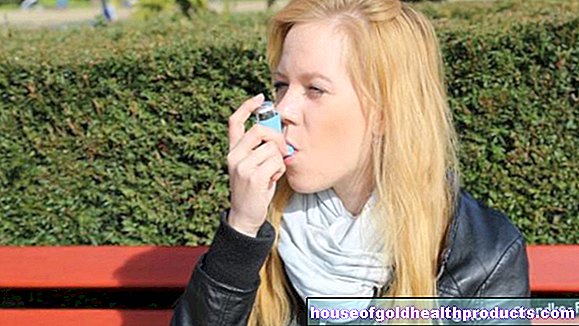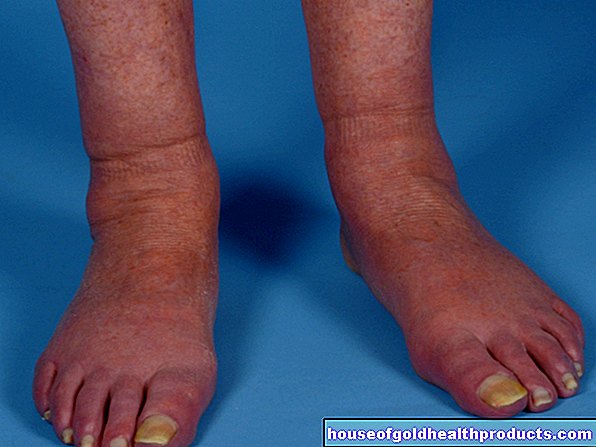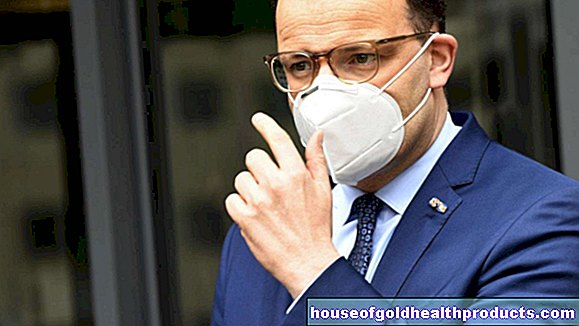Respiratory therapy
All content is checked by medical journalists.Breathing therapy includes exercises and techniques that are designed to make it easier for the patient to breathe and to promote his or her conscious awareness of the body. It is a branch of physiotherapy and is used, for example, in patients with asthma or chronic obstructive pulmonary disease (COPD). Read everything you need to know about breathing therapy, which exercises are available and which patients benefit from them.

What is respiratory therapy?
Breathing therapy or breathing gymnastics is a field of physiotherapy. It aims to use various techniques to make breathing easier for a patient (for example, strengthening the respiratory muscles or adopting a certain posture). Breathing properly also means that the patient improves his or her body awareness. Pregnant women therefore like to use respiratory therapy to prepare for birth.
When do you do respiratory therapy?
Complaints that require physiotherapeutic breathing therapy are sudden or persistent shortness of breath, expectoration, coughing and respiratory dysfunction. Such complaints occur, for example:
- Chronic obstructive bronchitis and COPD (chronic obstructive pulmonary disease)
- asthma
- Inflammation of the lungs (pneumonia)
- Pulmonary fibrosis
- Cystic fibrosis (cystic fibrosis)
- Surgery or trauma in the chest area
- Paralysis (e.g. paraplegia, multiple sclerosis)
What do you do with respiratory therapy?
The respiratory therapist decides which methods are correct in each individual case, depending on the individual therapy goals. Basically, all exercises are first described by the therapist and possibly demonstrated. The patient imitates the exercise, with the therapist providing assistance if necessary. If the patient feels a movement during breathing therapy as painful, it can also be reduced.
Respiratory therapy: exercises to improve mobility
Therapists often use so-called twist-stretch positions to improve mobility. The patient lies on his back on a sleeping mat and concentrates on individual parts of the body that lie directly on the mat - for example the back or the buttocks. Then he should relax completely and consciously "let himself sink".
Then the therapist instructs the “lower rotation position”: The patient puts his knees upright with his feet touching and lets his knees sink to the side. He places his arms bent over his head in a U-shape and turns his head in the opposite direction to his legs. Now the legs are tilted alternately to the right and left, whereby the trunk is stretched in the direction of the longitudinal axis of the thigh.
Another example is the so-called quadruped stand. The patient gets into position on all fours on the floor (knees directly under the hips, hands directly under the shoulders). Now he makes a cat hump, so bends his spine upwards and lowers his chin towards his chest. Then the countermovement follows: The patient slowly and consciously pushes the sternum downwards and thus goes into the hollow back. The head is put back slightly. The whole thing can be repeated several times. Variations are also possible, for example by not positioning the hands under the shoulders, but placing the fingertips on the floor directly in front of the supported knees in order to specifically train the thoracic spine area when bending and stretching the back. In another variant, you do not put the palm of the hand, but rather the forearms under the shoulders on the floor. In this exercise, the lumbar spine is mainly trained.
Respiratory therapy: exercises to improve breathing movement
In order to encourage breathing movement, the therapist helps the patient to consciously perceive his breathing movement. On the other hand, the patient actively trains the breathing movement when inhaling through:
- repeated sniffing during the inhalation phase
- breathing in slowly and deeply and holding your breath briefly
- Blocking one nostril when you breathe in through your nose
Breathing out can also be positively influenced by breathing exercises. It helps to make the exhalation visible, for example by breathing against a mirror.
Exhalation is passively supported by so-called manual chest compression: Here, the patient lies on his back with his legs up on his side on a therapy bed. The therapist places his hands on the chest and squeezes it gently but noticeably as you exhale. The patient should feel the pressure, but not perceive it as strenuous or restrictive.
Respiratory therapy: exercises for the regulated breathing rhythm
In order to practice even breathing, stretching exercises like those carried out in sport help - for example, free stretching of the whole body while standing. A breathing rhythm should be maintained during stretching and loosening, in which the breath does not have to be held during any exercise phase.
Passive stretching exercises with the therapist are also possible: for example, the patient lies in the side position on a therapy couch and bends the lower leg. The upper one is laid out stretched out on a pillow. The therapist grabs the inside of the knee and grips the ankle with the other hand. As soon as the patient inhales, the therapist stretches the calf muscles (the patient should remain relaxed). The stretch is relaxed as you exhale. Arms, feet or hands can also be treated in this way.
Respiratory therapy: exercises to strengthen the respiratory muscles
To strengthen the muscle groups involved in inhalation, the patient lies on his stomach. The pressure of the abdominal organs on the diaphragm makes breathing more difficult and more work has to be done to be able to breathe deeply.
For easier exhalation, relaxed training of the abdominal muscles such as sit-ups or simply tensing the abdominal muscles while standing is recommended.
Respiratory therapy: exercises to cleanse and keep the airways open
In pneumonia or cystic fibrosis (cystic fibrosis), mucus and secretions collect in the airways and obstruct them. Breathing therapy can help with various expectorant exercises. For example, when you breathe out you can hum “M” or exhale air at the sounds “P, T, K” so that the chest vibrates and the mucus loosens. It also has the same effect if the back is tapped firmly with the fingers over the affected sections of the lungs.
In order to keep the airways wide open and thus enable good gas exchange, a body position that relieves breathing is often sufficient:
- Lie on your side with your upper body slightly raised
- Sit with your arms propped backwards
- Squat with your head propped up on your knees
- Stand with your arms propped up
- "Goalkeeper posture" (arms supported on thighs)
Respiratory therapy: exercises for relaxation
To relax and slow down breathing, the patient lies on his back and places his hands loosely on his stomach. As he breathes, he gently strokes his abdominal wall with his hands. The same thing works when you are sitting, where your hands should be on your ribs. This technique is easy to do yourself.
Therapeutically guided exercises are, for example, shaking. The therapist grabs the patient's arm and lifts it in a relaxed position. Then he pulls it lightly repeatedly and lets go again.
Reflective breathing therapy
In so-called reflective breathing therapy, the therapist makes use of the body's reaction to breathing exercises. The holistic therapeutic measure consists of three parts:
- Application of heat
- manual techniques
- Breathing exercises
First, the therapist wraps hot towels around the arms or legs. This relaxes the muscles and prepares them for manual therapy, and stimulates blood flow and breathing. This is followed by so-called manual techniques: These are special physiotherapeutic grips that - similar to a massage - are intended to stretch the muscles and loosen the connective tissue. This is followed by breathing therapy exercises.
Respiratory therapy: exercises for emergencies
In order to counteract the collapse of the bronchi in the event of an asthma attack, patients learn what is known as the lip brake during breathing therapy: During an asthma attack, they exhale against the pointed, only slightly open mouth. As a result, the exhaled air is blocked in the lungs and pressure keeps the bronchi open.
What are the risks of breathing therapy?
Respiratory therapy is a safe practice when performed by a qualified therapist. Improperly applied respiratory therapy, on the other hand, can lead to health problems: For example, abnormally deep and fast breathing (hyperventilation) can lead to an insufficient supply of oxygen. The result is muscle cramps, sensory disturbances, chest pain and dizziness.
What do I have to consider after respiratory therapy?
There are no special rules of conduct for breathing training. If agreed with your therapist, do the exercises at home at regular intervals. Should an exercise that you have learned during breathing therapy prove to be painful, stop the exercise and report the symptoms to your doctor or respiratory therapist.
Tags: travel medicine interview alternative medicine






















.jpg)






